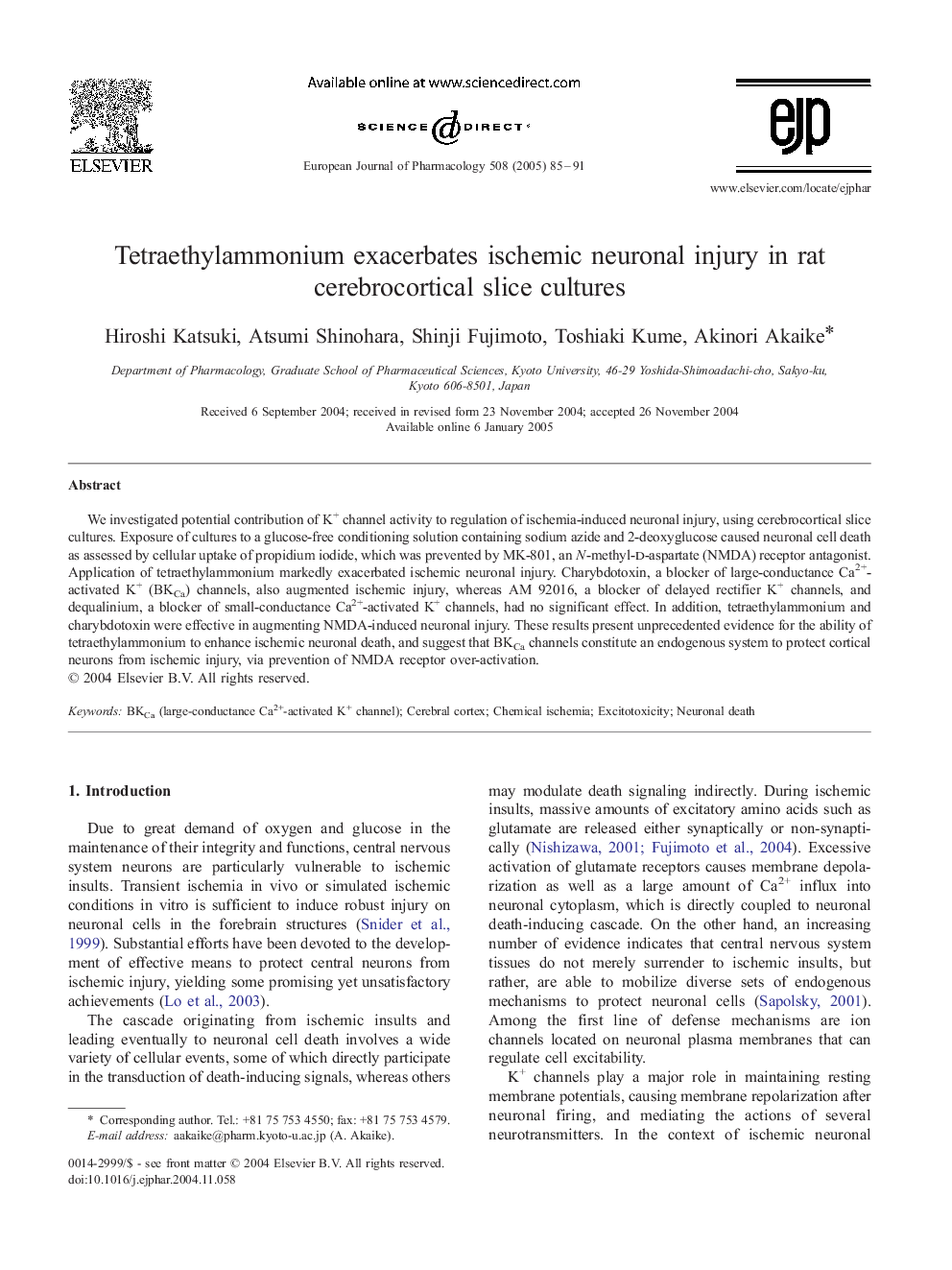| Article ID | Journal | Published Year | Pages | File Type |
|---|---|---|---|---|
| 9921523 | European Journal of Pharmacology | 2005 | 7 Pages |
Abstract
We investigated potential contribution of K+ channel activity to regulation of ischemia-induced neuronal injury, using cerebrocortical slice cultures. Exposure of cultures to a glucose-free conditioning solution containing sodium azide and 2-deoxyglucose caused neuronal cell death as assessed by cellular uptake of propidium iodide, which was prevented by MK-801, an N-methyl-d-aspartate (NMDA) receptor antagonist. Application of tetraethylammonium markedly exacerbated ischemic neuronal injury. Charybdotoxin, a blocker of large-conductance Ca2+-activated K+ (BKCa) channels, also augmented ischemic injury, whereas AM 92016, a blocker of delayed rectifier K+ channels, and dequalinium, a blocker of small-conductance Ca2+-activated K+ channels, had no significant effect. In addition, tetraethylammonium and charybdotoxin were effective in augmenting NMDA-induced neuronal injury. These results present unprecedented evidence for the ability of tetraethylammonium to enhance ischemic neuronal death, and suggest that BKCa channels constitute an endogenous system to protect cortical neurons from ischemic injury, via prevention of NMDA receptor over-activation.
Related Topics
Life Sciences
Neuroscience
Cellular and Molecular Neuroscience
Authors
Hiroshi Katsuki, Atsumi Shinohara, Shinji Fujimoto, Toshiaki Kume, Akinori Akaike,
